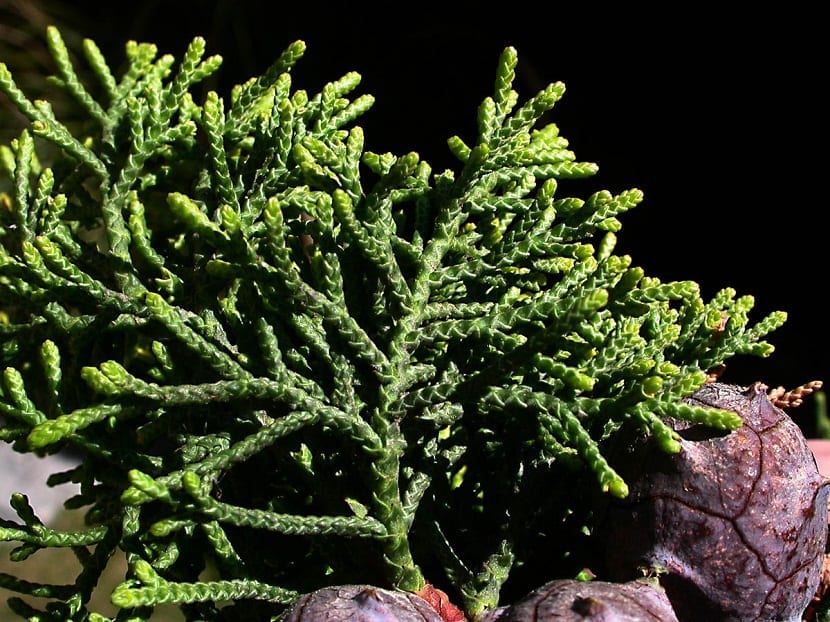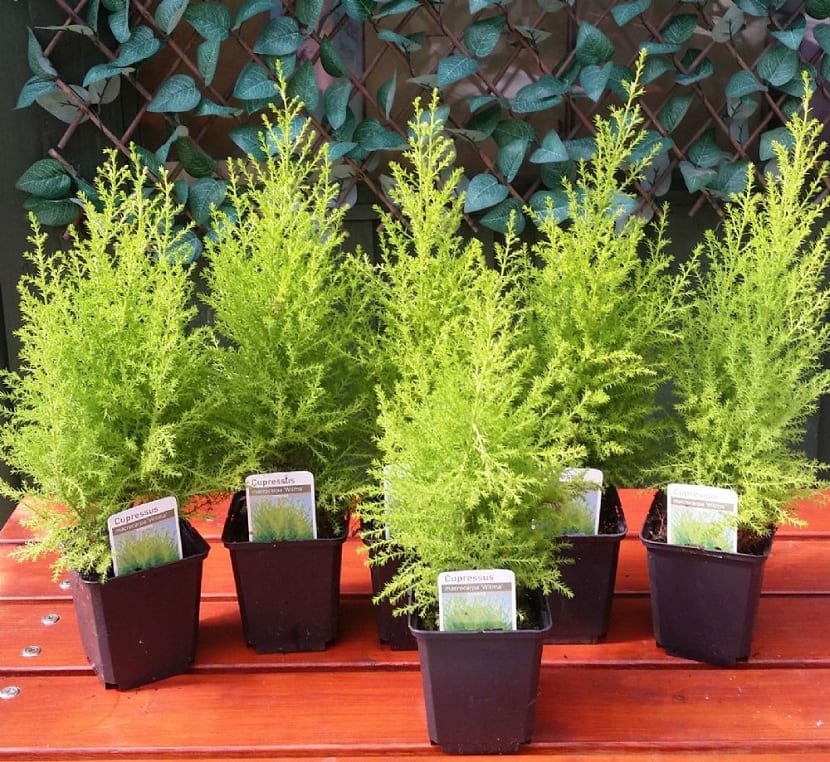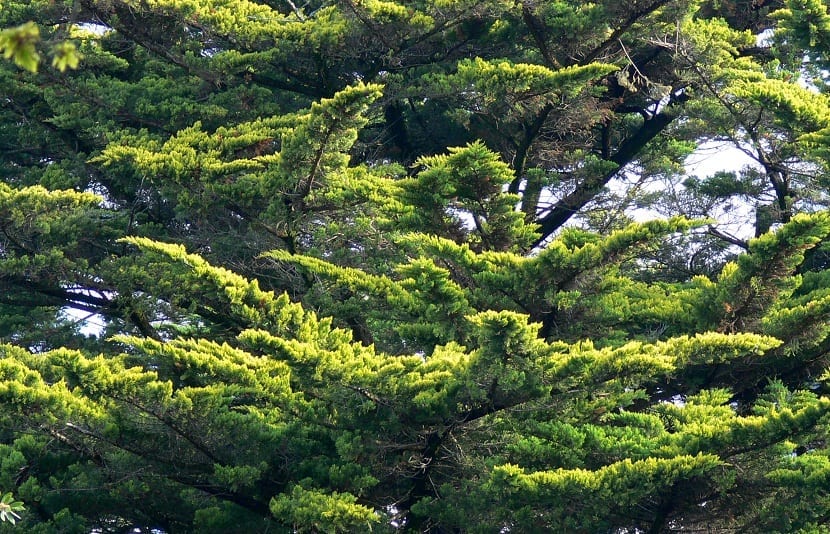
The lemon cypress, called Monterrey cypress, lemon cedar or lemon pine whose scientific name is Cupressus macrocarpa, is a tree that belongs to the group of conifers, the most common variety being the Goldcrest. This tree comes from a narrow strip of the Pacific coast, Monterey Bay in California, hence its name.
In the Canary Islands this tree was originally introduced for decorative purposes. It is located in land close to rural and / or urban areas, on the edge of roads and thrives specifically in wooded formations and in watery pine forests. It is customary to see it in the gardens of the coastal areas.
Features

For the Greeks it was a symbol of beauty and hospitality. In ancient times, two cypress trees were arranged on the sides of the door of a house.sa to welcome visitors.
The lemon cypress has a conical shape, its are fragile and perennial leaves of yellowish green color and it reproduces by grafting or seeds, in addition there is another diversity of silver tone. They give off an aroma of citrus fruits, characteristic of lemon.
The fruits are similar to a pineapple and when they are not ripe they are reddish. As they develop, they assume a grayish hue. Its brown trunk measures up to half a meter in circumference and is wrinkled and usually during its youth grows an approximate annual average of 1,5 meters in height.
After the age of 40, it achieves sizes close to 30 meters, but there are even trees that reach 50 meters and there are also dwarfs. This is due to the ecosystem where they thrive.
It requires minimal care, so we can say that it is a very resistant tree. I know adapts to all types of climates, less arid, but preferably temperate where there is neither cold nor intense heat. It can grow in areas of high altitude or close to the sea and in the shade, although its color is enlivened when it receives direct sunlight. The ideal soil must be moist and it must also have good drainage to prevent water from accumulating at its roots.
Crop and pests
It is recommended to apply acidifying fertilizers, prune the apex and its dry branches, otherwise it can reach up to three meters in height and even being grown in pots.
Due to its overall appearance, it is used as an attractive ornamental plant in terraces, patios, lobbies or gardens where there is enough fresh air and lighting. Its wood usually gives off a fragrance similar to cedarIt is not resinous and is used as firewood in carpentry, cabinetmaking, crafts, paper production, construction, sculpture and frameworks.
It is susceptible to some fungi or pests and especially aphids (aphids), tending to dry out due to lack of magnesium. It is important to spray with insecticides to prevent them or prevent them from destroying the plant, especially in spring, since it does not recover.
When watered often, cypress trees give rise to a fungus called Phytophora, a species of algae that attacks the root of the pine tree and completely covers the stem.

Some species of conifers, mainly the cypress of Monterrey, are in serious danger of extinction due to their limited distribution, the action of an invasive pathogen and the wild goats present in areas of the Californian coast.
It is important to highlight its longevity, since this tree can live for two or three centuries, mainly thanks to its high ecological value, since not only are they part of the most important forests in the world, but they also absorb more carbon dioxide (CO2 ) than any biome (except wetlands), keys in the fight against climate change.
La presence of flavonoids in cypress leaves, grants it antithrombotic, anti-inflammatory, anticancer, analgesic, antiseptic, and antimicrobial properties.
On the other hand, the tannins contained in its cones and foliage help it coagulation, they are astringent and vasoconstrictive. Useful to avoid skin infections, heal wounds, heal varicose veins and ulcers, alleviate acne, excess sweating and seborrhea.
Inhalations of the oil taken from this tree and together with hot water, relieves catarrh, asthma, cough, bronchitis, sinusitis and pharyngitis. It is also used in the cosmetic industry to make shaving lotions, perfumes or colognes.
I have the first in my possession. Soon it will be bonsai. For now it is just a beautiful tree!
Hi John.
Great, enjoy it, but be patient if you want to have it as a bonsai. It is a slow growing tree.
Look, here we explain how to make a bonsai.
Regards!
With you I learn a little more each time. The information is, at the same time interesting, very practical. Thank you.
Thank you Dekun 🙂